State of Charge
Charging Station Reviews
We independently review every item we recommend. If you buy through our links, we may earn a small commission that helps us continue to make quality content for you. Thanks for your support!
Shockflo G1 Portable EV Charging Station Review
A promising EV charger lacking one very important thing.
Table of Contents:
Shockflo is a comparatively new company in the electric vehicle charging industry, but that hasn't stopped it from hitting the ground running. In hardly any time at all, the manufacturer has built a roster of at least five different AC charging options and three charging adapters, all built in China.
Since so many of my followers are interested in portable charging options, I specifically asked for ShockFlo's portable 40-amp G1 EVSE when the company reached out to me about sending its products for review. While portable EV charging stations are great in theory, many of the current choices on the market have proven cheap and unreliable at best, so finding a trustworthy portable EV charger has been a challenge. Keep reading to hear how the ShockFlo G1 handled my comprehensive testing regimen.
Key Specs of the Shockflo G1 Portable
By definition, a portable charger is intended to be used on the go, and the ShockFlo G1 is no exception. This EVSE arrived in a convenient soft-bodied carrying case, which contained the body of the unit and its charging cable with its J1772 connector, a mounting cradle, a brief instruction guide, and some screws. The provided screws were honestly garbage– too small and flimsy to be of good use. If you're going to use the mounting cradle with the G1, do yourself a favor and replace those screws.
If you prefer to mount the portable EV charging station in a more permanent location for daily charging, you can attach the mounting cradle to the wall in your desired position, preferably along a stud so you're less likely to accidentally rip the screws out of the wall and near a NEMA 14-50 outlet. Once the cradle is installed, the ShockFlo G1 will slide right into place and you're good to charge.
Unfortunately, the ShockFlo G1 does not come with any sort of connector holster or cable management system. If you are in need of an inexpensive accessory to manage your charging cable, I recommend checking out this Lectron dock and hook combo – I often use it with my EV charging stations.
The ShockFlo G1 can come as either a 32-amp or 40-amp charger, both of which use a NEMA 14-50 outlet. I tested the 40-amp version that delivers up to 9.6 kW– as long as your vehicle can accept that much power. It's worth remembering that the vehicle's onboard charger will dictate how much juice your EV can handle from an AC charging source, so plugging a 40-amp ShockFlo into your car's 32-amp onboard charger won't deliver any more electrons than the 32-amp version would. Both versions have a small display screen to show charging information, as well as buttons to choose a power output (between 16, 20, 24, 32, and 40 amps, depending on the max) and apply a charging delay in one-hour increments.
The ShockFlo G1's 20-foot cable is coupled with a J1772 connector that comes with a very nice rubberized cap for protection. Unfortunately, the company does not yet offer EVSEs with the North American Charging Standard (NACS) connector, so Tesla owners will need to use a J1771-to-Tesla adapter, which currently comes standard for North American Tesla vehicles.
I believe that ShockFlo missed out by not marketing the G1 as a dual-voltage charger. The unit's specs say that the voltage range is 100V to 240V, meaning that it could potentially work as a Level 1 charger and charge from a 120-volt, standard household outlet with the proper adapter. Sadly, ShockFlo says nothing about this and only markets the G1 as a Level 2 charger.
Testing
Claims and expectations are one thing, but a charging station's actual performance is ultimately what matters. I test every EVSE I review with a series of tough trials meant to simulate conditions you may experience during everyday use. The ShockFlo G1 was no exception.
The Cable Deep Freeze Test
Since some of us live in cold climates where cable flexibility will be a crucial part of the EV charging experience, this test is critical in discovering which EVSEs can handle those frigid temperatures. I coiled up the ShockFlo G1 and put it in a commercial ice cream freezer for 24 hours to imitate those conditions, and when it came out, I measured the temperature at -13° F (-25° C). When the G1 came out, the charging cable proved to be stiff but manageable. While not fantastic, it was better than most, meaning that I don't have a problem recommending it for cold weather use.
The Connector (and Unit) Drop Test
While the connector is fresh out of the freezer, I conduct my Drop Test, where I check a connector's durability by dropping it around 5 times to the concrete floor of my garage from waist height. The ShockFlo G1 passed with flying colors, showing no damage at all. For good measure, I also performed the Drop Test on the body of the unit, since it is meant to be portable. Again, the G1 did just fine– it didn't even scuff.
The Extreme Heat Test
For those of us who live in hotter climates, I perform the Extreme Heat Test to see how an EVSE might hold up when installed in areas that get extreme heat. I left the ShockFlo G1 baking in front of a heat lamp for two hours, until its temperature reached 116° F (46.7° C), then plugged it into my Chevrolet Bolt to charge at max power for another two hours. The ShockFlo G1 does come with overheat protection, so when the unit hit its 131° F (55° C) temperature limit, it began to derate the charging power. But it continued to charge without any issues, and that earned it a pass in my book.
The Submersion Test
For my last test, I did my Submersion Test– a favorite for portable EV charging stations where we see if a device really lives up to its waterproof rating. The body of the G1's unit does have an IP67 rating to protect against the invasion of dust and water, which is higher than the average portable charging station. This means that the ShockFlo G1 should be able to handle being submerged for up to 30 minutes in up to a meter of water. So, I tossed the G1 into a bucket of water for 20 minutes to see what would happen. I used to do this test hot, meaning that I was actively charging a vehicle while the device was submerged in water, but since many of the portable EVSEs I've charged in the past have catastrophically failed, I waited to plug this one in until after I took it out of the water. After a little toweling off and being plugged back in, the ShockFlo G1 powered right up and charged the Bolt without issue. That's another pass.
Charts can't quantify everything, so I also give the charging stations I've tested a score based on my personal thoughts. I gave the ShockFlo G1 a rating of 3.5 stars out of 5, primarily because this EVSE does not have any sort of safety certification. I'd love to give it a much higher score, but I cannot put my faith in a product that hasn't gone through testing by any established certification body and my followers can't feel safe using. After averaging the ChargerRater score with my own, the ShockFlo G1 came away with a final score of 4.0 stars. It scored well in my tests, but I can't recommend purchasing it– at least not until it gets safety certified.
The ShockFlo G1 portable EV charging station is currently available for $349.99 on Amazon (as of April 9, 2024). Take a look at the video above for my comprehensive review, and let me know what you think in the comments below.

By: Tom Moloughney
YOU MIGHT ALSO BE INTERESTED IN:


EVChargingStation’s Comment Policy
We welcome polite, respectful comments, but rudeness and personal attacks will not be tolerated. All comments are reviewed prior to publication. Thanks for joining in the conversation!

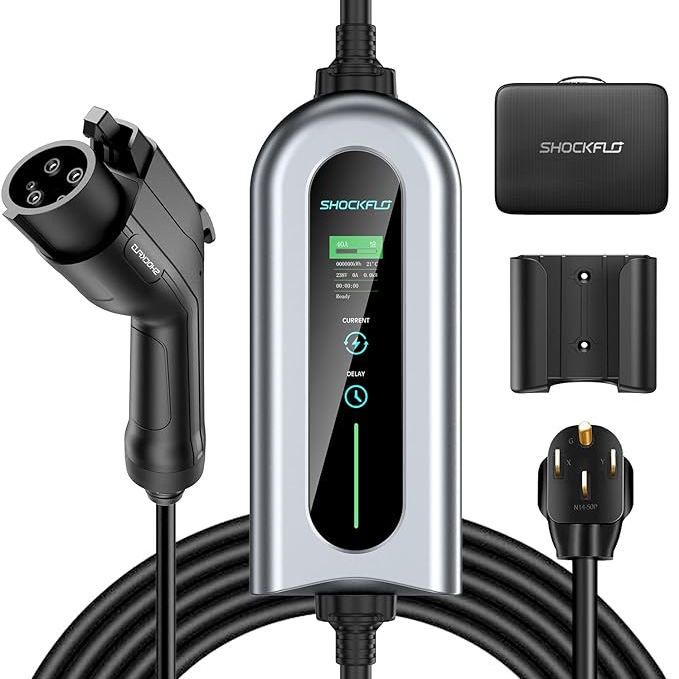
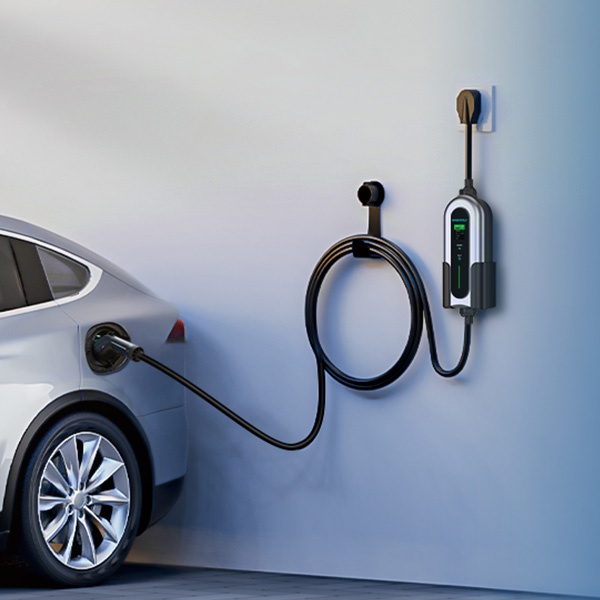
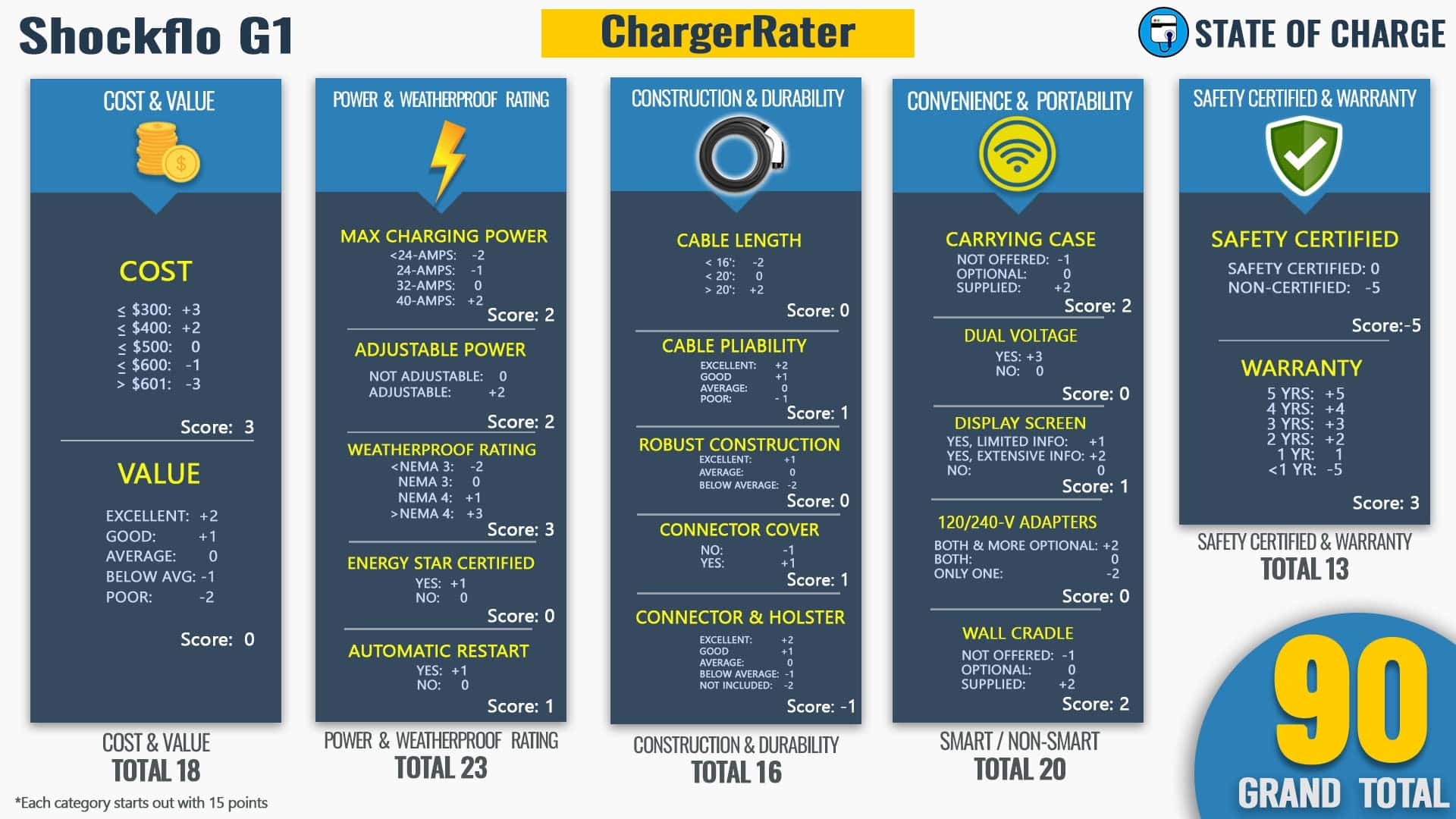


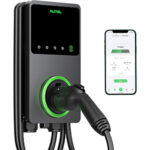

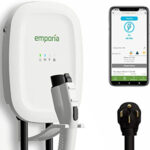

0 Comments